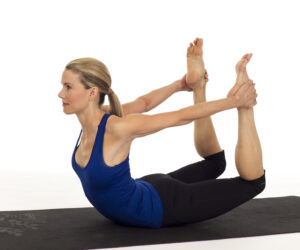With the pandemic forcing many gyms to close, more people are turning to home gyms as a convenient and safe alternative. However, simply acquiring gym equipment is not enough to make an effective home gym setup – it requires planning and strategizing to optimize the space and ensure a motivating workout environment. In this article, we will explore seven strategies for creating an efficient and inspiring home gym.
1. Assessing Your Space
Before investing in gym equipment, it’s crucial to assess your available space and layout options. Consider the dimensions of the room and any weight-bearing capacity or height limitations. Keep in mind that most gym equipment has a significant footprint, so make sure you have ample space to accommodate your desired pieces. You can also consider multi-functional equipment to save space without sacrificing functionality. By assessing your space, you can ensure that you have enough room for your desired equipment and create an efficient and safe workout environment.
2. Investing in Quality Flooring
When it comes to home gyms, the flooring is just as important as the equipment. The right flooring can provide a safe and durable surface for your workouts, as well as reduce noise and vibration. Hardwood or tile floors can be slippery and damaged by dropped weights, while carpets can trap dust, sweat, and bacteria. Quality rubber flooring or interlocking foam tiles are popular choices for home gyms due to their durability and safety features. Additionally, high-quality mats can protect your joints during floor exercises and provide cushioning for your equipment. By investing in quality flooring, you can ensure an optimal workout experience that protects both you and your home gym equipment.
3. Choosing the Right Equipment
The type of equipment you select should be based on your individual fitness goals. If you prefer cardio workouts, consider investing in a treadmill or stationary bike. If you prefer strength training, Body-Solid and other quality fitness equipment brands offer a range of high-quality weight training equipment, including power racks, benches, and free weights. Many well-known brands are known for their durability and versatility, making them popular choices for both home and commercial gyms. Additionally, most home gym products come with long warranties, providing added peace of mind for those investing in their equipment. Lastly, look for multi-functional pieces that can save space and provide a variety of workout options.
4. Creating an Inviting Atmosphere
An inviting atmosphere can help set the tone for a productive workout. You can create a welcoming and energizing space by incorporating elements such as natural light, plants, and motivational music or posters. Adding bright colors to the walls or using mirrors can also help create a sense of spaciousness. The goal is to make the space feel comfortable and motivating so that you’re more likely to stick to your workout routine. A well-designed environment can help get you in the right mindset for an effective workout and ultimately help you achieve your fitness goals.
5. Organizing Your Equipment
Keeping your gym equipment organized is essential for both safety and efficiency. A disorganized gym can be hazardous, and searching for misplaced items can waste valuable workout time. Using storage solutions such as wall-mounted racks and shelves can help keep your equipment tidy and easily accessible. It’s also important to organize equipment in a way that makes sense for your workout routine. For example, placing weights closest to the area where you’ll be doing strength-training exercises. By organizing your equipment, you’ll not only create a safer environment but also save time and maximize the effectiveness of your workouts.
6. Maximizing Efficiency
Maximizing efficiency is key to getting the most out of your home gym workouts. One way to achieve this is through circuit training, which involves performing multiple exercises back-to-back with minimal rest in between. This allows you to target multiple muscle groups and get a full-body workout in a shorter amount of time. Another way to maximize efficiency is by selecting equipment that targets multiple muscle groups at once, such as kettlebells or resistance bands. This saves time and space while still providing an effective workout. Additionally, tracking your progress and setting achievable goals can help you stay motivated and make the most of your workout time. By maximizing efficiency, you’ll be able to achieve your fitness goals and make the most of your home gym setup.
7. Staying Motivated
Maintaining motivation is critical to achieving your fitness goals. One way to stay motivated is by setting achievable goals and tracking your progress. This can be done through a fitness app or journaling your workouts. Another way to stay motivated is by finding a workout buddy or joining an online fitness community. Having someone to hold you accountable and share your experiences with can help keep you motivated and on track. Additionally, changing up your workout routine and trying new exercises can prevent boredom and keep you engaged. Lastly, celebrating your successes and rewarding yourself for reaching milestones can help maintain motivation over the long term.
Optimizing your home gym setup requires planning and strategizing. Assessing your space, choosing the right equipment, creating an inviting atmosphere, organizing your equipment, maximizing efficiency, and staying motivated are all essential components of a successful home gym. By following these seven strategies, you can create an efficient and inspiring workout space that will help you achieve your fitness goals. Remember, fitness is a journey, not a destination, so enjoy the process, and have fun!



